Green Paving

The StoneSet Policy
In all our activities we seek to prevent pollution, minimise wastage, operate to the best environmental standards practice and comply with legislation.
The manufacture of concrete is one of the largest contributors to CO2 emissions. By looking at alternative paving methods that utilise plant renewable products, locally sourced aggregates and to reuse rather than replace we can have a positive effect on not only our own environment but the whole planet.

PERMEABLE PAVING OR POROUS PAVING?
Researching permeable paving and wondering what the difference is between permeable driveways and porous driveways? Don’t despair!
Often used interchangeably, the technical difference can best be explained using familiar paving examples
Porosity – implies the material has small ‘pores’ in an otherwise solid surface. For example Sandstone is ‘porous’ as it lets water through what is actually classed as a rock.
Permeability – water is able to penetrate only via gaps between solid pavers. For example, If you tipped a bucket of water on a section of paved driveway next to a concrete footh path, water will penetrate through the gaps in the pavers.
The important factor here is the rate at which water can penetrate, to be of practical benefit returning to the ‘ground water’ table. Concrete has 96% of its pores connected, technically making it ‘porous’ but we know intuitively – concrete is not practically porous, rather it channels rain off in our stormwater system because its porosity flow rate is so exceedingly small!
IS POROUS ‘BETTER’ THAN A PERMEABLE DRIVEWAY?
Typically ‘Porous’ paving see a higher effective water penetration than Permeable paving, mainly because the entire surface is able to absorb water, not just the small percentage of surface that are gaps!
Porous paving also avoids the reality of ‘dirt compaction in the gaps’ on driveways – a result of daily vehicle compaction. Dirt eventually accumulates and is compacted over time, clogging the permeable sections and results in the familiar hardy-weeds growing.
Intuitively, its much harder for dirt to become compacted and clog pores of hard surfaces like sandstone. Just as a honeycomb provides strength its voids, Porous paving ensures any weight loading is distributed over the structure and not allowing dirt compaction that occurs between permeable paving gaps.
Porous paving therefor experiences a longer practical design life returning water to the ground water table. Which is why it is chosen not just to take 1Tonne or more vehicle weights daily, but to with stand hundreds of pedestrians daily.

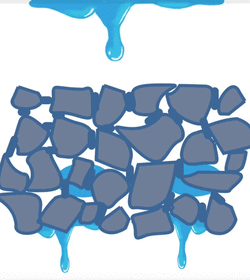
Nearly 25% of StoneSet by volume is air! Meaning a quarter of the surface are voids that maintain their porosity and to allow water to flow through.
If StoneSet is applied as a 16mm layer on top of an existing rigid, non porous surface (such as an old concrete driveway) this is loosely termed semi-permeable paving. Water passes freely through the top layer but is unable to penetrate into the ground.
Fully permeable is when StoneSet is applied over the specified 150mm ‘compacted road base’ before applying the resin stone mix at 25mm layer. This achieves a porous base and overall permeability rate of 103L/sqm/min, essentially as porous as soil and grass.
StoneSet has a porosity rate high enough to satisfy councils and certifiers in Australia and certifiers that it can be classed as soft landscaping. Even with some of the most demanding councils hard to soft landscaping ratios in Australia.
Examples of bases that can support a fully permeable surface include;
- Crusher dust
- Road Base
- Crushed Rock
Typically councils in Australia class a 25mm application of StoneSet as fully permeable in the calculation of hard / soft landscaping ratios when considering development applications. Indeed nearly all Tree Surrounds StoneSet install for councils involve this method of fully permeable paving.
RESURFACE OR FULLY POROUS?
Resurfacing an existing hard surfaces such as concrete driveways is possible using an ‘overlay‘ of 16mm StoneSet.
The finished stone driveway surface can still be called ‘permeable paving’ however the base will not allow water to penetrate into the soil below, so this can sometimes be termed ‘semi permeable’.
Therefore the 16mm application of StoneSet is mainly those looking at concrete resurfacing to achieve a stone driveway. Typically this permeable paving cost per square metre is cheaper than alternative options of concrete driveway removal when weighing up options for concrete driveway alternatives.
The resulting stone surface can still be called a permeable and indeed StoneSet can put in place ways of redirecting water flow to the garden and reduce stormwater runoff.
Others of course are just happy to create a decorative stone ‘amazing driveway‘ which essentially receives no UV or Water erosion damage like some other common driveway materials Australia has available.
- Crusher dust
- Road Base
- Crushed Rock
Typically councils in Australia class a 25mm application of StoneSet as fully permeable in the calculation of hard / soft landscaping ratios when considering development applications. Indeed nearly all Tree Surrounds StoneSet install for councils involve this method of fully permeable paving.
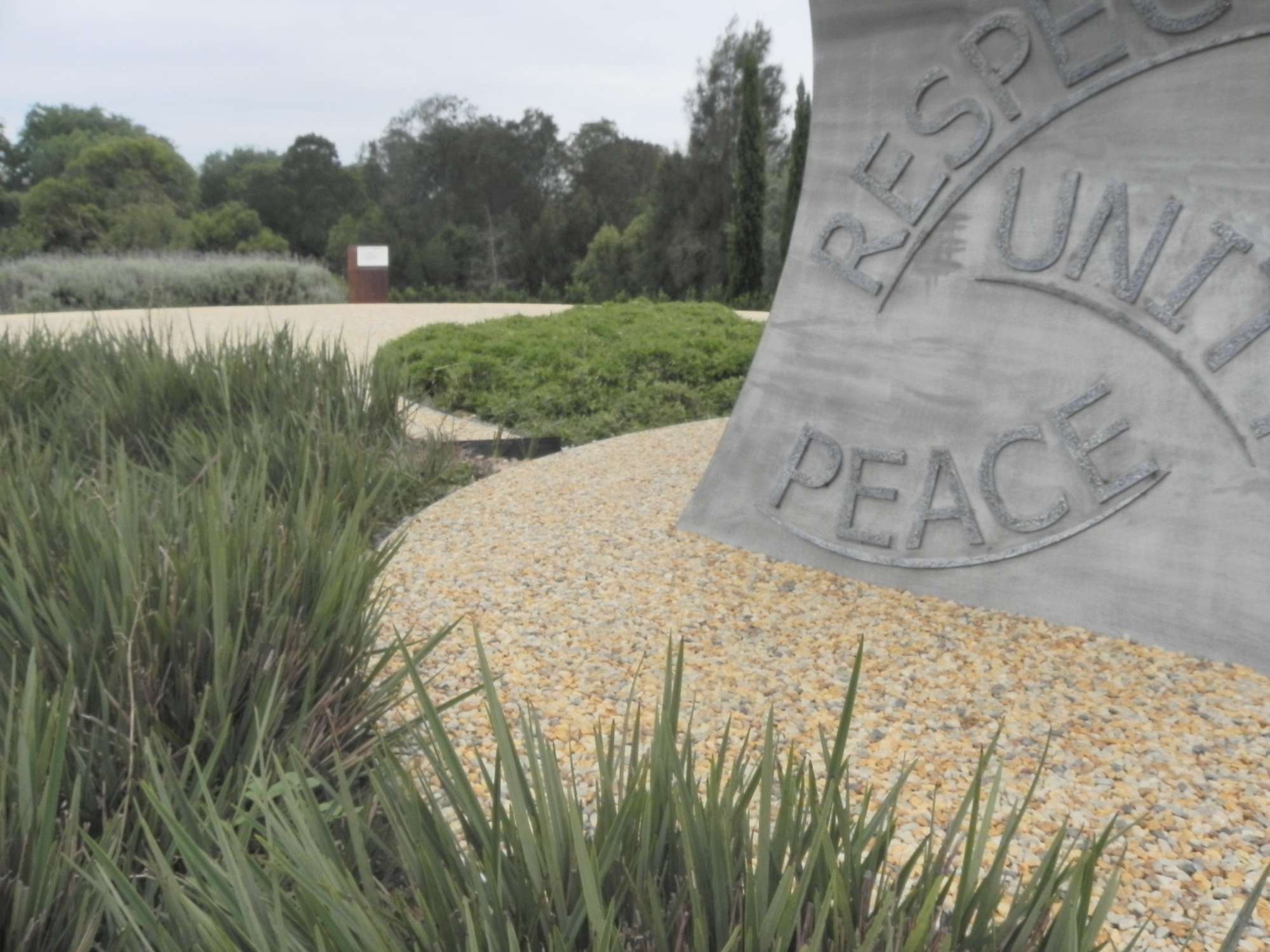
All StoneSet products are fully porous/permeable which allows water to penetrate the surface and flow through to the ground below. With issues surrounding flooding, pollution and preservation orders on trees, a porous surface is becoming increasingly important in fact essential.
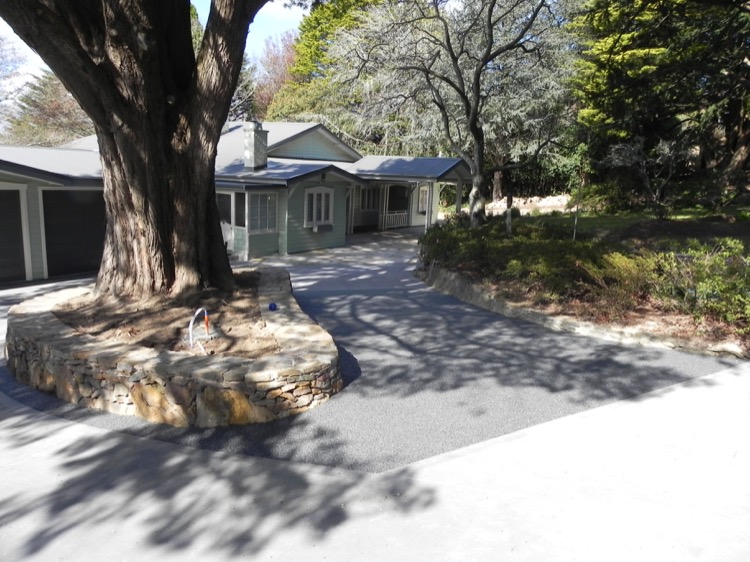
Because of the strength of our high grade resin our design process uses optimal amounts of resin creating a strong bond. This results in the particles being held firmly together at the points of contact only, leaving voids for water and air to permeate through.
GREEN PAVING
StoneSet’s environmental credentials are as follows;
NATURAL STONE
StoneSet uses locally sourced natural aggregates. Compared with the embodied energy required to transport raw materials and fabricate other hard surfaces (such as kilns and mixing plants)
REDUCED LANDFILL
The majority of StoneSet applications involve an overlay topping or ‘concrete resurfacing’. This is both economical and environmentally beneficial as the existing concrete base is not removed and sent to landfill.
REDUCED STORMWATER
StoneSet permeable driveways return water to the ground water table. Even an overlay results in a permeable concrete driveway where runoff can be channelled in sections to the side to reduce runoff.
NO SYNTHETIC DYES
As StoneSet uses natural stone, there is no use of chemical dyes – meaning no fading in colour from constant UV exposure. We also use less raw materials overall as the layer is porous with (air gaps) meaning lower amounts of raw materials, including our polyurethane binding resin.
The Water Cycle “continuous movement of water on Earth”
Water soaking back into the ground is very important to recharge ground water creeks and streams, the process naturally filters the water providing cleaner healthier waterways.
THE PROBLEM
As we have been building urban areas we have created vast amounts of impervious surfaces in the form of buildings, roads and footpaths.
Our outdated system of handling stormwater dates back to the Romans where we simply channelled the water down gutters, into drains carrying pollutants and creating stormwater surges. This in turn creates a rush of polluted water that hits our waterways and causes erosion and flooding.
In an effort to control the quality of our waterways and reduce surface run off and flooding, local councils are now restricting the footprint of impervious surfaces on plots of land.
THE SOLUTION
Simply put, permeable paving is the solution. If all of our paving was fully porous, almost no stormwater would be washing pollutants into the waterways.
The size of a property, driveway and pathways can be affected by higher permeability restrictions to gain council approval.
By using StoneSet you can achieve all the low maintenance benefits of hard surfaced paving alternatives such as blocks, outdoor paving and concrete, but with the properties of a soft landscaped lawn or loose gravel therefore meeting council permeability requirements and having a positive effect on the environment.
CONRETE RESURFACING OVERLAY
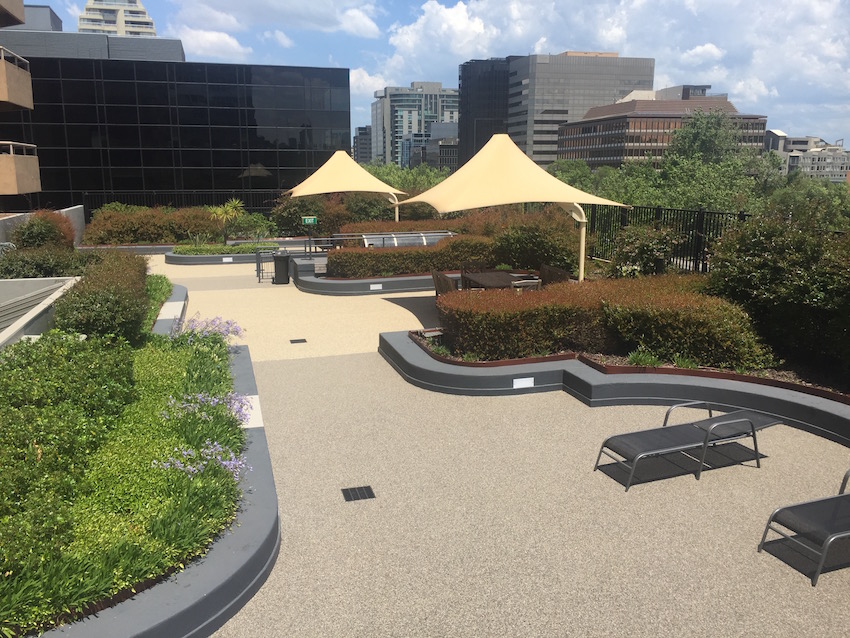
Often an area of existing outdoor paving can become worn and patched up, even cracked without losing its structural strength and integrity. StoneSet can be used as a surface dressing to bring it back to life, looking better than ever. When originally conceived StoneSet was designed simply for an attractive, natural surface for overlaying concrete and asphalt.
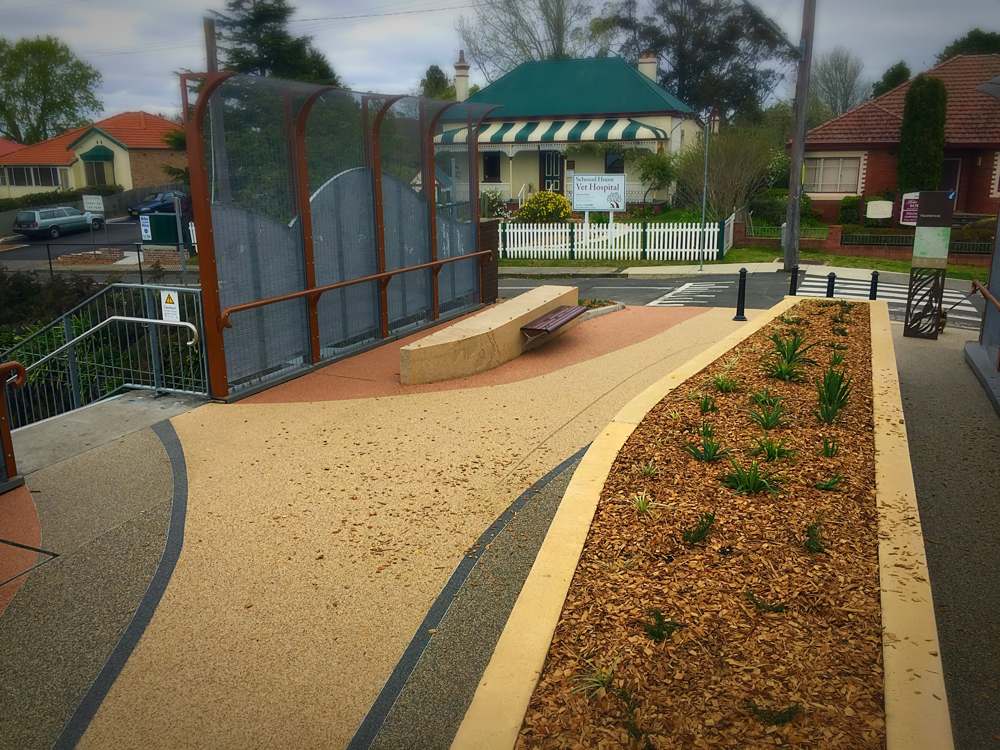
By using an existing surface you can dramatically reduce the amount of raw material used to replace the paving as well as eliminating the waste being taken to landfill. A great application is when StoneSet is used to change colour of terracotta tiles. Rather than painting external terracotta tiles.

Using an existing impervious surface such as concrete doesn’t mean that you can’t make full use of the porous nature of StoneSet permeable paving products. By incorporating a drainage channel as a collection point the water can still be collected before reaching drains and returned to the water table or harvested on site for re-use.
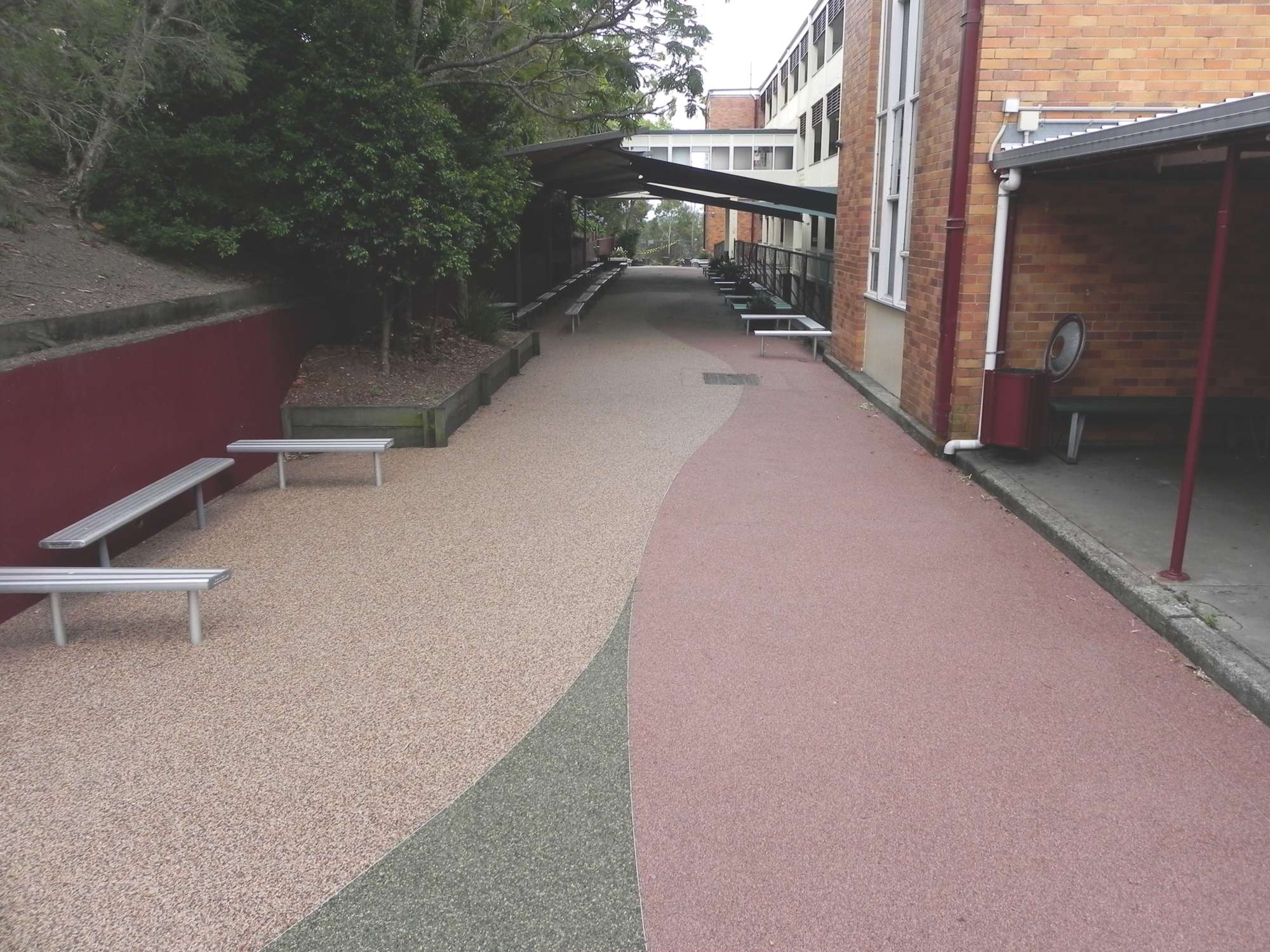
By not having to remove any old product and taking advantage of a quick installation method, StoneSet can help bring a refurbishment in on time and budget. You can even incorporate logos, patterns and design into the surface.
TECHNICAL ADVICE & SPECIFICATIONS
SPECIFICATION ADVICE, SAFETY DATA SHEETS & GUIDE’S
We are always available to help with all aspects of StoneSet paving.
We have specification advice sheets for all applications and are happy to provide copies of any safety data sheets are required for site inspection.
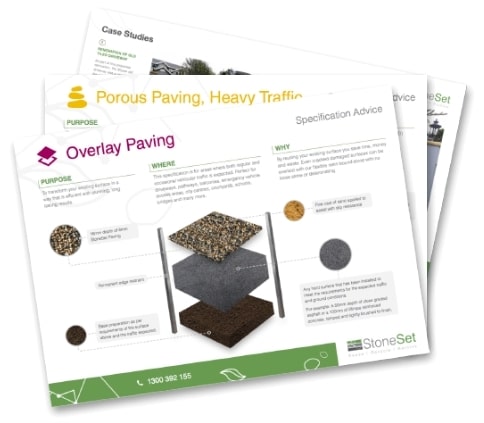
HEAT ISLAND EFFECT
Although we may not be fully acquainted with the phenomenon that is urban heat island, we’re all familiar with its effects – the change in temperature between the concrete jungle of the city compared to the rolling hills of the countryside.
Porous Paving can help reduce some of the heat island effect as some of the water that soaks into the ground subsequently evaporates. Called the wicking effect, this in turn cools the air.
Reflect the heat with StoneSet’s range of colours that enable you to select lighter coloured surfaces which absorb less heat, making the surface cooler to walk on and reduces the overall surrounding temperature.
Keep rivers cool. Surface run off from rainfall can lead to heating via conduction into local rivers which can greatly affect the ecological balance and harm fish and other organisms.
Allowing rainwater to soak back into the ground, rather than creating surface run off improves the health of surrounding rivers.
DROUGHT SENSITIVE
StoneSet provides a hard wearing useable surface that will not suffer in dry seasons and does not equire water for the installation.
StoneSet requires no water for the manufacture or installation, while other decorative stone surfaces require lots of water and can send toxins and cement into surrounding drains.
Water harvesting and passive irrigation are an integral part of water sensitive design. When rain water is unable to soak back into the ground, the earth becomes dry and trees and plants suffer as a result. In periods of drought the rain water should be collected and held within the ground or harvested for reuse rather than channelled straight to the waterways.
Car parks and driveways can be turned into water harvesting areas. While roof tops have long been used to collect rain rainwater, so too can your hard landscaped areas. An added benefit is the filtration that can occur combined with the space saving of using an underground storage tank.
